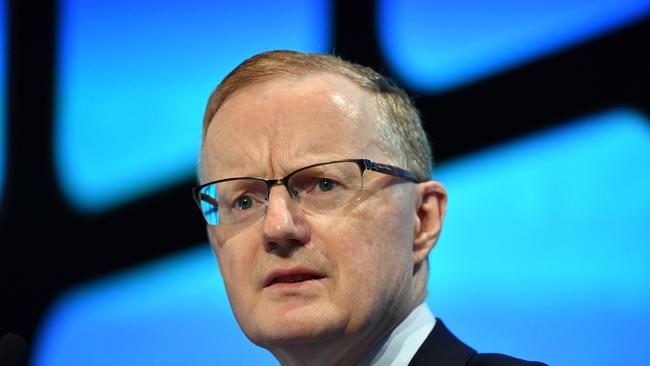Reserve Bank of Australia’s growth forecasts are looking increasingly optimistic
If the Reserve Bank was increasingly isolated last week, it’s marooned on a desert island this week.

If the Reserve Bank was increasingly isolated last week, it’s marooned on a desert island this week.
The central bank’s upbeat forecast of 3 per cent growth this year, which has looked increasingly shaky in the wake of last week’s sombre national accounts, was dealt a double whammy today.
The closely watched National Australia Bank business survey revealed business confidence and conditions fell last month, dashing hopes the modest improvement in January would be sustained. The Australian dollar has dropped almost a quarter of a cent in early morning trade, to around US70.6 cents.
The survey of 400 odd business around the country found profitability waned along with the flow of new customer orders. Business conditions have now almost returned to the reading in December — which saw the biggest drop since the financial crisis.
The survey might be downplayed — it’s a survey, after all — were it not for the concrete numbers from the Australian Bureau of Statistics on the flow of lending. They added to the gloomy picture.
The number of home-loan approvals, including refinancing, fell by a seasonally adjusted 2.6 per cent to January from December. Economists had expected no change for the month. The value of loans for investment housing fell by 4.1 per cent from December, the ABS said in its monthly lending update. Over the year lending to households for homes has dropped 21 per cent.
The Reserve Bank last year dumped its forecast of 3.5 per cent growth for 2019, shaving it to 3 per cent. That revision is looking too optimistic as well.
Over the year to December the economy 2.3 per cent, which is probably a more realistic prediction for what we might expect this year.
Reserve Bank deputy governor Guy Debelle is due to speak on climate change and monetary policy in Sydney tonight.
It’s probably fair say he’ll get more questions about housing market and monetary policy in the question and answer session.







To join the conversation, please log in. Don't have an account? Register
Join the conversation, you are commenting as Logout